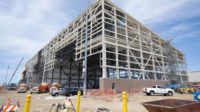Superfund Project Backlog Continues to Increase
The backlog of unfunded Superfund cleanups continues to grow, according to numbers recently released by the U.S. Environmental Protection Agency. The number of projects that are ready to begin, but cannot because of a lack of funding, rose from 20 in 2018 to 34 in 2019, the highest number since 2016, the last year operating under an Obama-era budget.
Steven Lamb, a principal with GZA Geoenvironmental, notes that the figures seem to correspond with what the industry has observed. Although backlogs have long been a challenge with the Superfund program, “In general, I think the feeling in the industry is that the federal budgets [for Superfund] have gone down,” Lamb says. “The money that [EPA] has earmarked to manage the Superfund program is less than it has been” in previous administrations.
But an EPA spokesperson says that it is Congress, not agencies, that ultimately funds federal programs. Moreover, the spokesperson said in an email that EPA has been able to delete more sites from the Superfund National Priorities List (NPL) of contaminated sites in the Trump administration’s first three years than during Obama’s first term. The official added, “In fact, in FY 2019, we deleted all or part of 27 sites from the NPL, the largest number of deletions in one year since 2001.”
The numbers can be misleading because contaminated sites can be complex and take years to clean up completely. Thus, remediation begun under one president may not be deleted from the NPL until a later administration.
Charles Howland, a former EPA attorney, says he’s not aware of a reason for the higher EPA numbers. Howland, now in private practice, adds that the Superfund Task Force established by former EPA Administrator Scott Pruitt issued a report last fall recommending that further work to revamp the Superfund program should continue.





